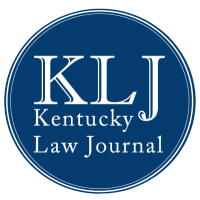Abraham Lincoln earned the nickname “Honest Abe” due to his prioritization of honesty in every situation that he found himself in.[i] A famous statue of Lincoln sits in a chamber of the Lincoln Memorial to honor “Honest Abe” for his strong beliefs in dignity and freedom.[ii] A replica of this statue can be found in Middle Creek Battlefield in Prestonsburg, KY, where the Union army stopped a Confederate charge during the Civil War.[iii] This battlefield, however, is not the replica’s first location. Initially, this statue was purchased by a local attorney and was placed in front of his law office.[iv] Ironically, this local attorney, Eric C. Conn, was sent to prison for committing the largest Social Security fraud in American history.[v]
Read moreThe Dilemma of Judicial Remedies to Non-Compete Agreements
Non-compete agreements[1] have become a prevalent mechanism used by employers in the United States.[2] In fact, around 20% of American workers are bound by non-compete covenants.[3] Employers use these agreements to protect themselves from unfair competition practices that may result from an employee leaving to work for a competitor or establish a competing business of their own.[4] Many, however, criticize the use of non-compete agreements as oppressive on an employee’s ability to take advantage of opportunities to move upward in the workforce.[5]
Read moreShould We Take a Closer Look at the Copyright Implications of Translating Computer Code?
In copyright law, computer codes are treated in the same vein as literary works.[1] The definition of a literary work in 17 U.S.C. §101 describes a literary work as one made of words, numbers, or similar symbols that does not otherwise classify as an audiovisual work, which helps to rationalize the convention of treating computer code as a literary work.[2] A computer code falls squarely into that definition as a work comprised of nothing more than letters, numbers, and various associated symbols. Additionally, a computer code is the unique expression of a programmer’s creative endeavors which confers copyright protection upon the code, much like a writer would have copyright protection for a short story or novel.[3] Based on these parallels, the rationale makes sense, but what about other aspects of copyright law? Does this comparison make sense for other aspects of copyright law such as derivative works and fair use? After thinking it through, I think it may be worth taking a closer look at the copyright implications of translating computer codes, specifically source codes. The current test courts use for comparing computer codes may provide too narrow of protection, and there is a risk of programmers translating codes into new languages to prevent reinventing the wheel.
Read moreThe Pending Tragedy in Kentucky’s Family Court System
In 1988, the Kentucky General Assembly passed a Concurrent Resolution to establish a “Family Court Feasibility Task Force.”[i] At the time, Kentucky had no Family Court System.[ii] Instead, the responsibilities commonly associated with the modern Family Court, such as divorce and child custody, were distributed among the already existing levels of the Commonwealth’s judicial system.[iii] As a result of the task force’s findings, in 1991 the Kentucky Supreme Court created a pilot project in Jefferson County to oversee the viability of developing a Family Court system within the Commonwealth.[iv] It was a resounding success.[v] Over thirty years later, with the passage of a constitutional amendment making “Family Court a permanent part of the Kentucky Constitution[vi] . . . with more than 75 percent of the vote,”[vii] the Kentucky Family Court system has indeed seen many successes.[viii] Touted under the “One Family, One Judge, One Court” mantra, Kentucky’s Family Court System espouses the promise that it allows “the same judge to hear all matters involving a particular family.”[ix] Contrary to this mantra, however, it appears that two counties, and nearly 26,000 people, are at risk of being kicked out of this judicial family called Family Court.[x]
Read moreEstablishing a Feasible Alternative Design: The Sixth Circuit’s Approach to the Burden of Proof
To determine whether a product is defectively designed, the existence of a feasible alternative design that could have reduced or prevented the plaintiff’s harm may aid the court in a defective determination.[1] The more feasible the alternative is, either economically or scientifically, the more likely the court will find the product to be defectively designed.[2] Some courts have decided that, in a design defect action, the plaintiff has the burden of proving that a feasible alternative design exists.[3] Establishing proof of a feasible alternative design puts an unreasonable burden on plaintiffs which requires them to provide evidence that is usually within the knowledge of manufacturer.[4]
Read more“Don’t Put Me in a Box!”: Why Kentucky Should Join the Ban the Box Movement
In 2004, the All of Us or None organization devised the Ban the Box movement with the hope that former criminals could start receiving a fair chance at gaining meaningful employment. Rather than being hindered by their past conviction, the movement sought to allow former criminals to be judged purely based on their skill set.[1] Despite the hypothesized negative impacts of the Ban the Box initiative, the movement has been steadily growing across the United States. Ban the Box has led to substantial impacts for the economy, employers, and especially convicted criminals.[2] It is time for Kentucky to Ban the Box and give criminals a “fair chance at redemption.”[3]
Read moreReminder: Same-Sex Marriage is at Risk in Kentucky – and State Courts Probably Can’t Save It
If Dobbs v. Jackson Women’s Health taught us anything, it’s that no United States Supreme Court precedent is safe. Roe v. Wade protected reproductive rights for almost 50 years until it was overturned by Dobbs.[1] Justice Clarence Thomas’s concurrence in Dobbs called for multiple landmark cases, including Obergefell v. Hodges, to be revisited entirely due to defective reasoning.[2] Even though the Dobbs majority dicta stated it does not threaten Constitutional protection of same-sex marriage, the decision itself contradicts that statement.[3] The fact that Dobbs overturned nearly 50 years of precedent proves that any precedent – even that which many Americans believed was untouchable— can be overturned. This includes same-sex couples’ right to marriage.[4] Thus, it is completely rationale to think the same fate that befell Roe can befall Obergefell as well.[5] And if that happens, there doesn’t appear to be anything Kentucky state courts can do.
Read moreKentucky's Contradictory Treatment of the Testator's Intent when Considering Wills
Throughout our lives, we all work diligently to provide for ourselves and others. We work to buy our first car and house; to purchase jewelry, furniture, décor, etcetera; and to acquire many other assets. While we cherish these assets during our lives, we cannot hold onto them forever. We do, however, retain the right to control their disposition. For some, this process is made simple by hiring an attorney. For others, they will take matters into their own hands and write out their final wishes. Both processes, if done correctly, are valid,[1] but one mistake may have major consequences.
Read moreJus Soli on U.S. Military Property: Extending Birthright Citizenship to Babies Born to Refugee Mothers Evacuated by the United States Military Following Family Service to the United States
The United States’ airlift evacuation of Afghan citizens from Afghanistan in the summer of 2021 facilitated the departure of Afghans whose personal safety was compromised in the face of the Taliban seizure of Afghanistan.[1] Evacuees airlifted by the United States military were leaving Afghanistan because their personal safety was compromised due to the assistance an evacuee or their family member(s) had provided to the United States government in Afghanistan.[2] Since the airlift evacuations, “more than 250 children have been born to Afghan evacuees on United States military bases [within the United States].”[3] At least 570 babies in total have been born in the United States to Afghan evacuee mothers.[4] These 570-plus children were automatically granted U.S. citizenship because they were born on United States soil.[5]
Read moreThe Hammer and the Chisel: The Tools of the Court and their Effect on Public Opinion
This article examines how the Supreme Court compositions are influenced, notably the Warren and Rehnquist Courts, by the judicial philosophy of the Chief Justice. These Chief Justices imprinted their judicial philosophy on the Court, not only by their voting patterns, but by their choices in how the decisions were written, who wrote them, and which tools the Court chose to use.[1] In this article, the Chief Justice will be viewed as the wielder of either the hammer or the chisel.
Read moreThe Decision that Made Judges Historians: How Bruen’s Historical Inquiry Has Left Judges Inconsistent and With “Low” Confidence
The last Supreme Court session brought some of the most controversial rulings in recent times. One of those was the Court’s ruling in New York State Rifle and Pistol Ass’n v. Bruen.[1] Bruen clarified the two-step test under which regulations of Second Amendment rights are to be evaluated, looking at first, if the conduct is covered by the plain text of the Second Amendment, and second if there is a historical tradition of such a firearm regulation in this Nation.[2] This test, although consistent with Heller[3], has recently caused federal judges to reach inconsistent holdings regarding the constitutionality of certain 18 U.S.C. § 922 provisions.[4] While the first step of the test does not seem to be the strongest point of contention among judges, the disparities in the historical traditional step of the test beg the question as to whether judges are applying the test correctly at all.
Read more










